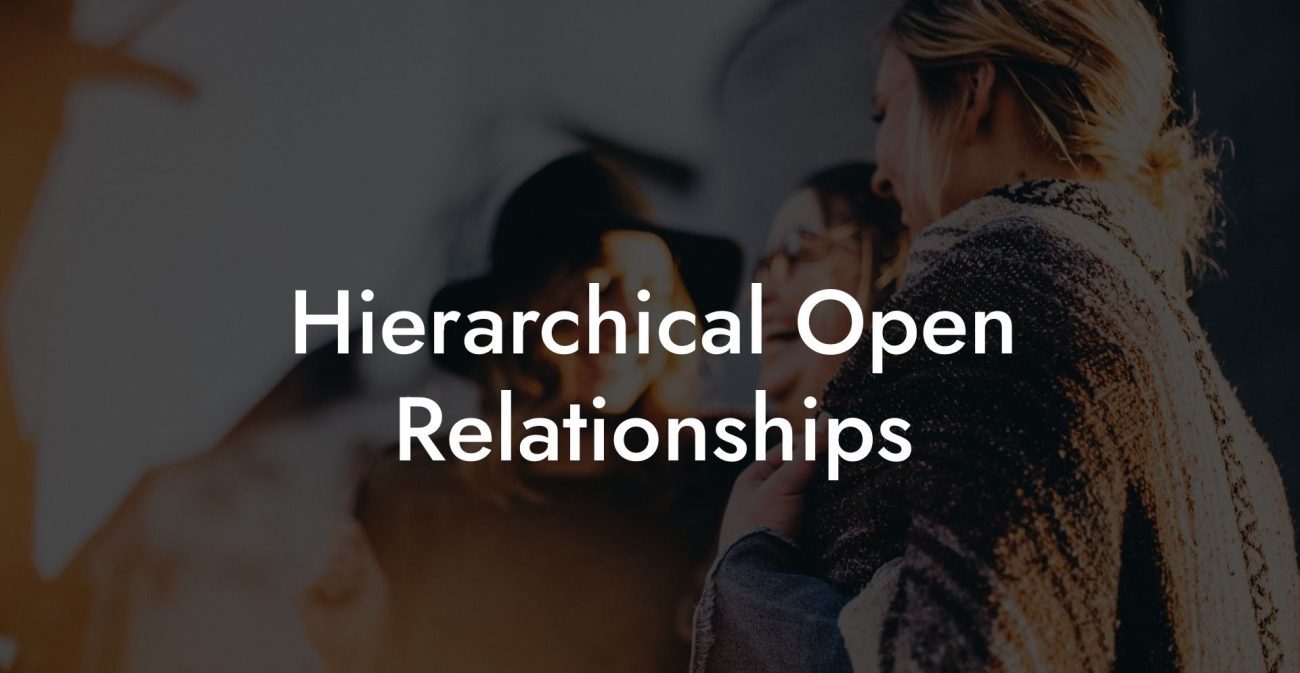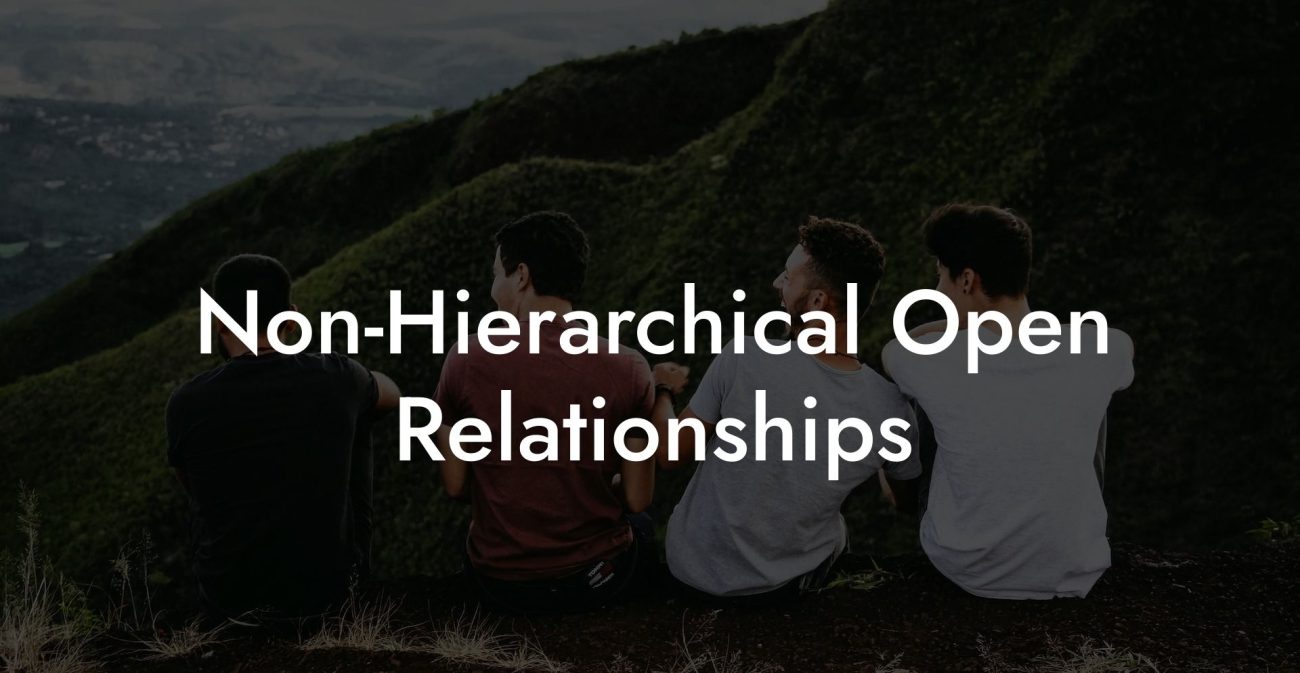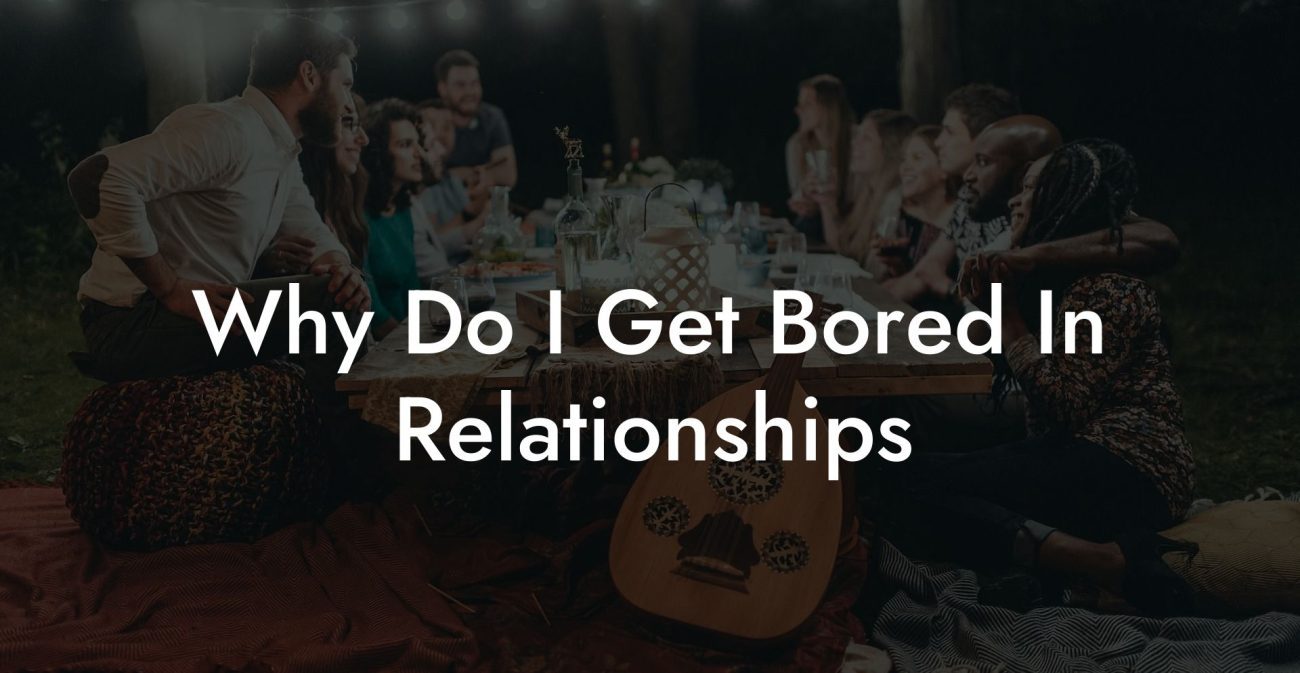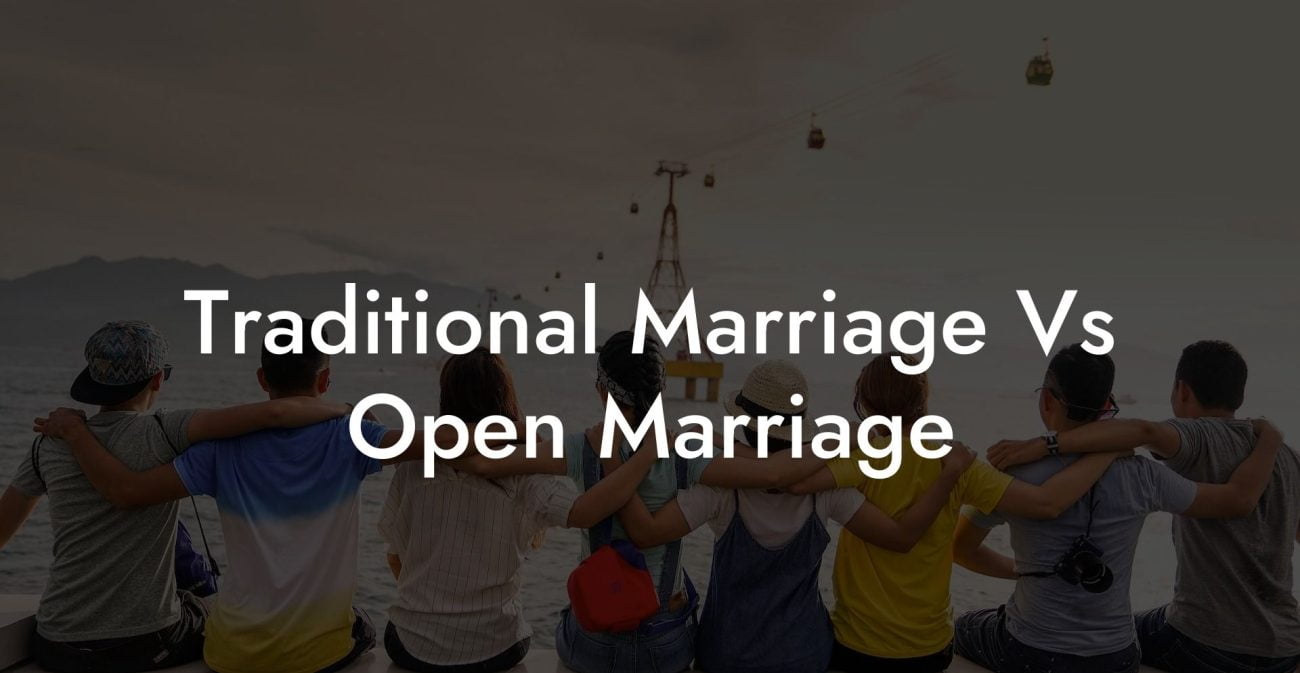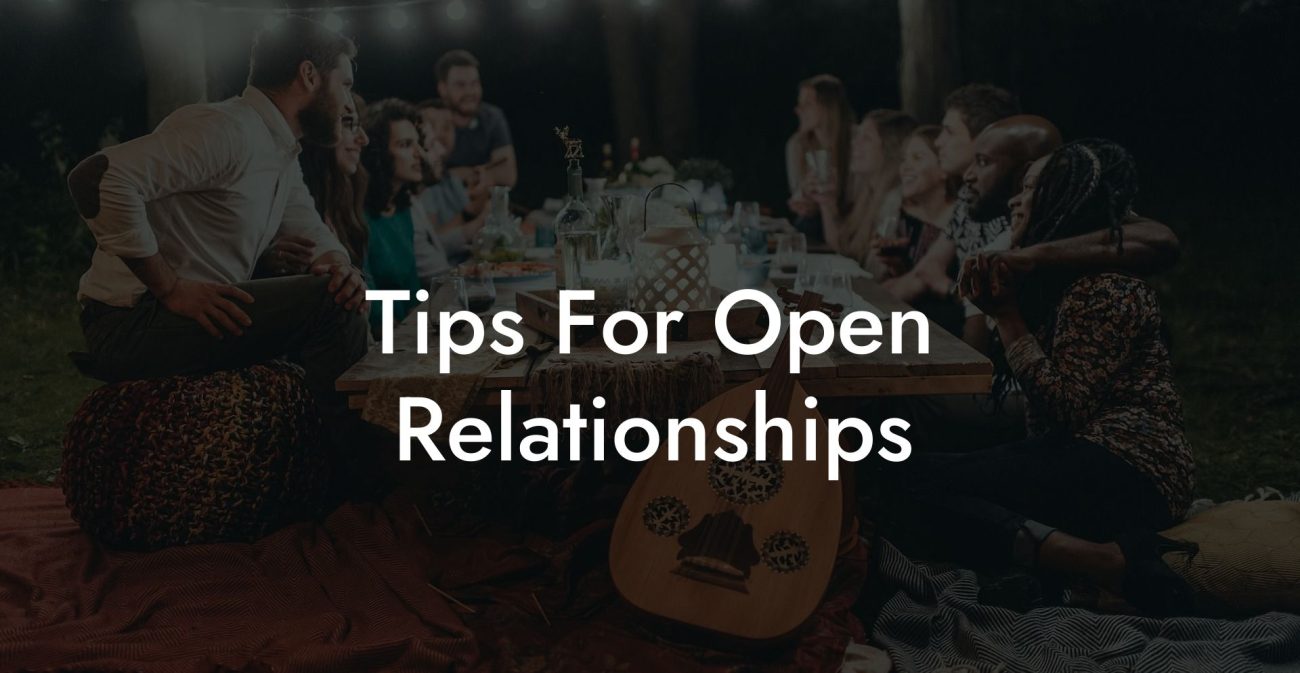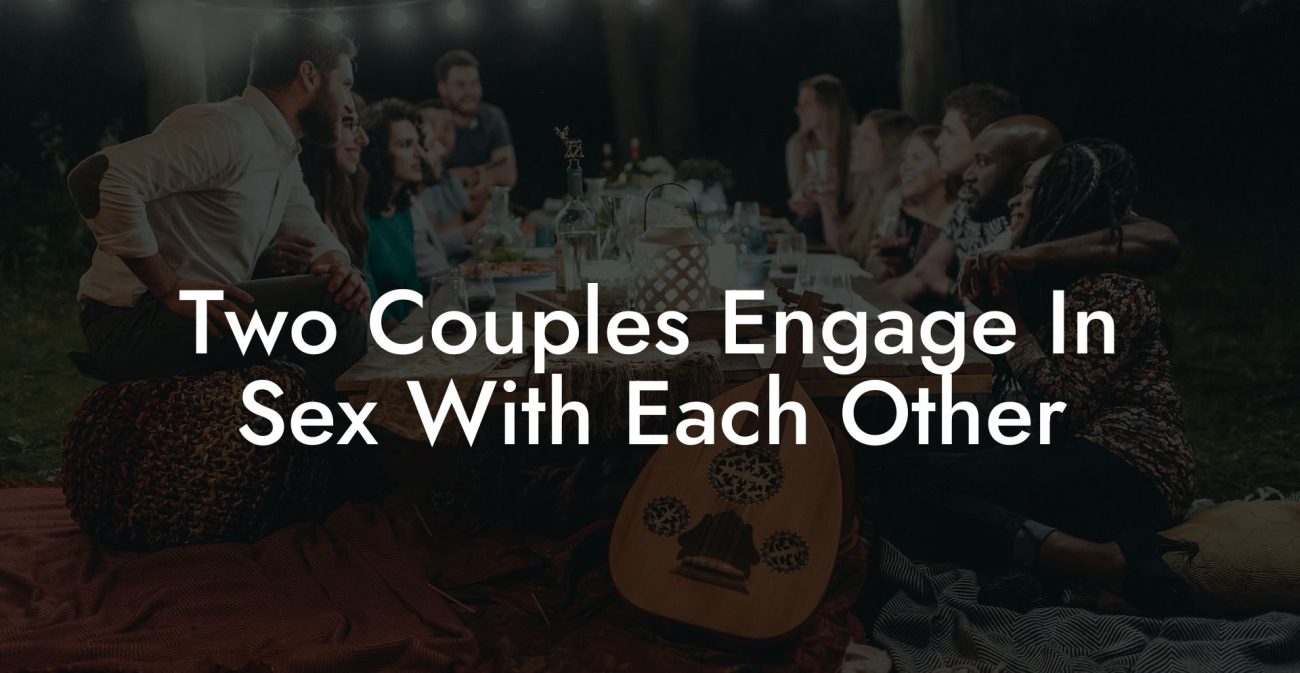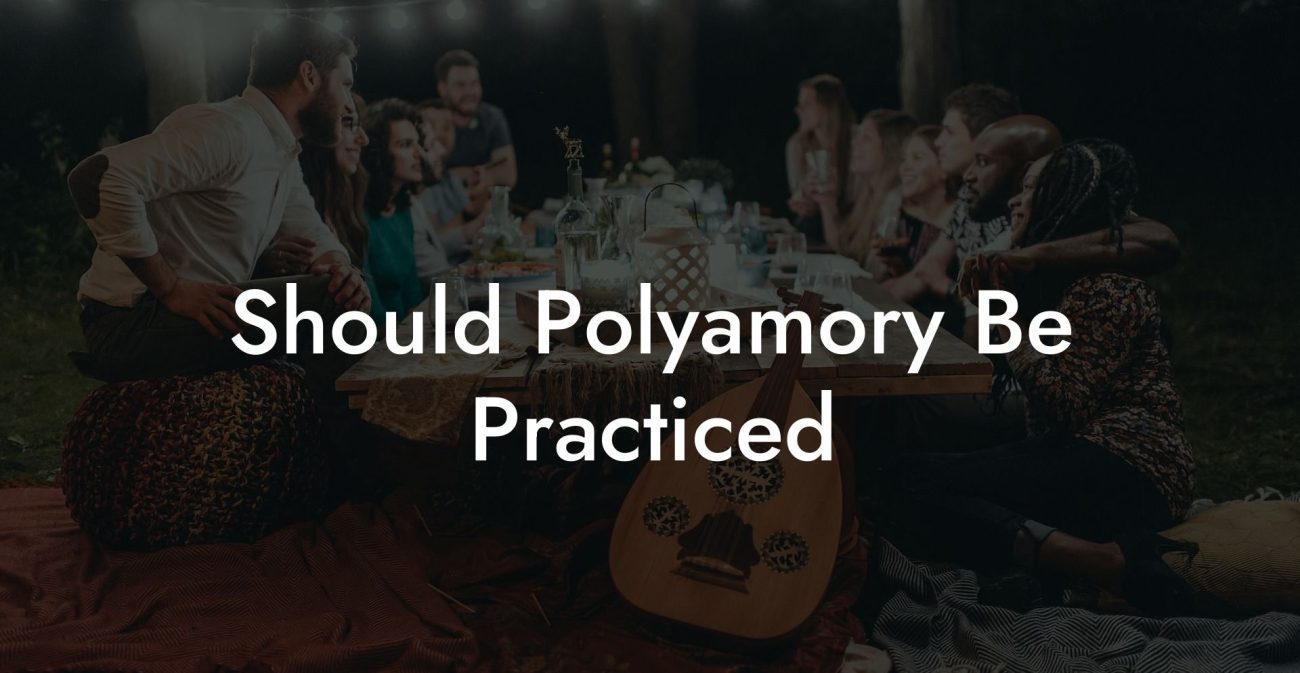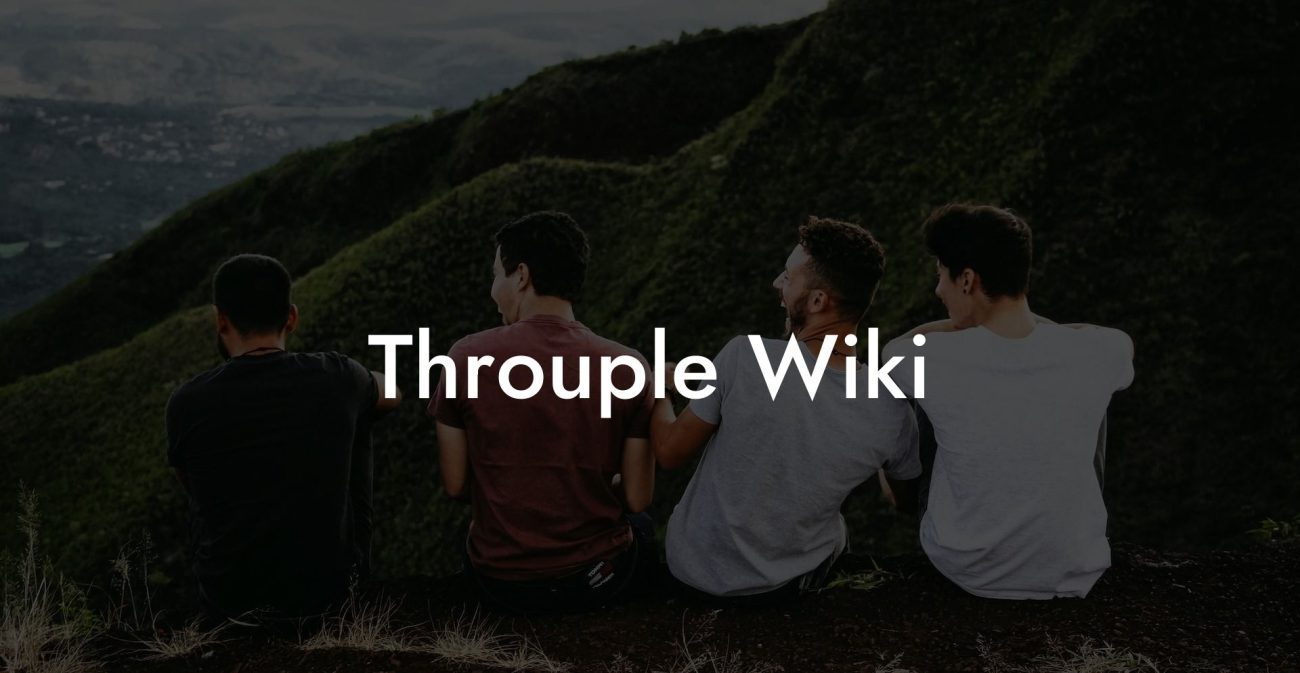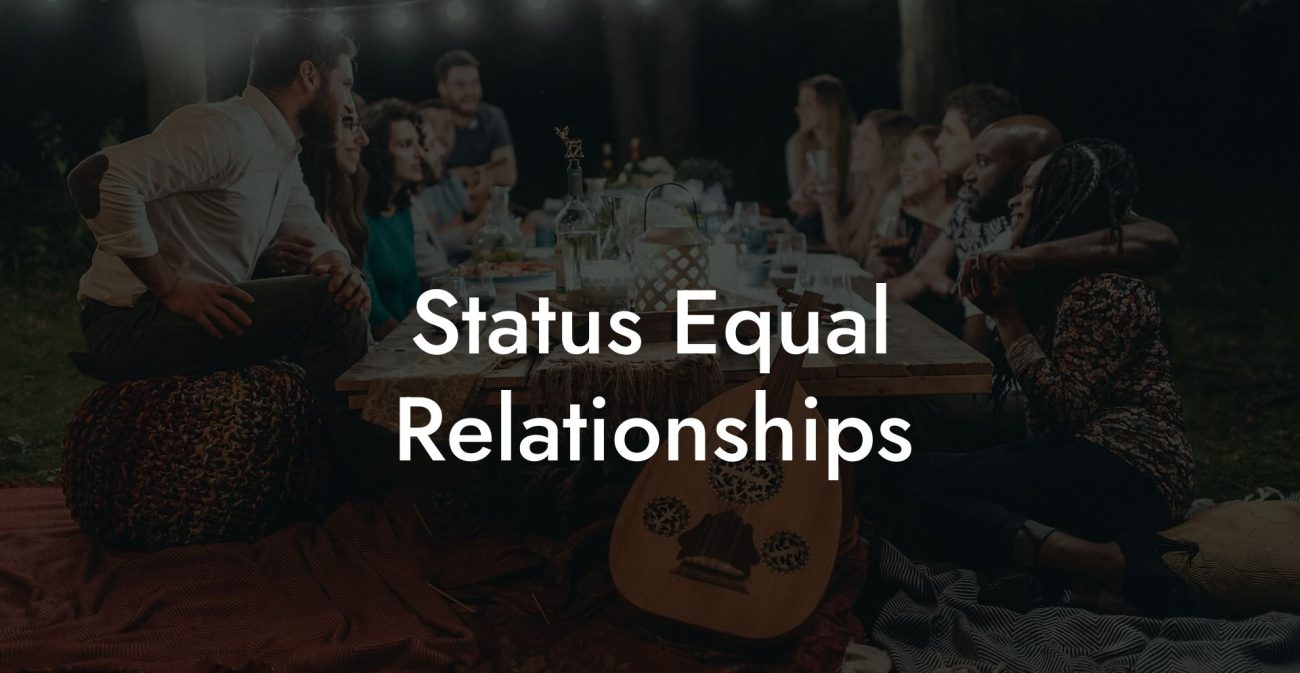List Of Open Marriage Rules
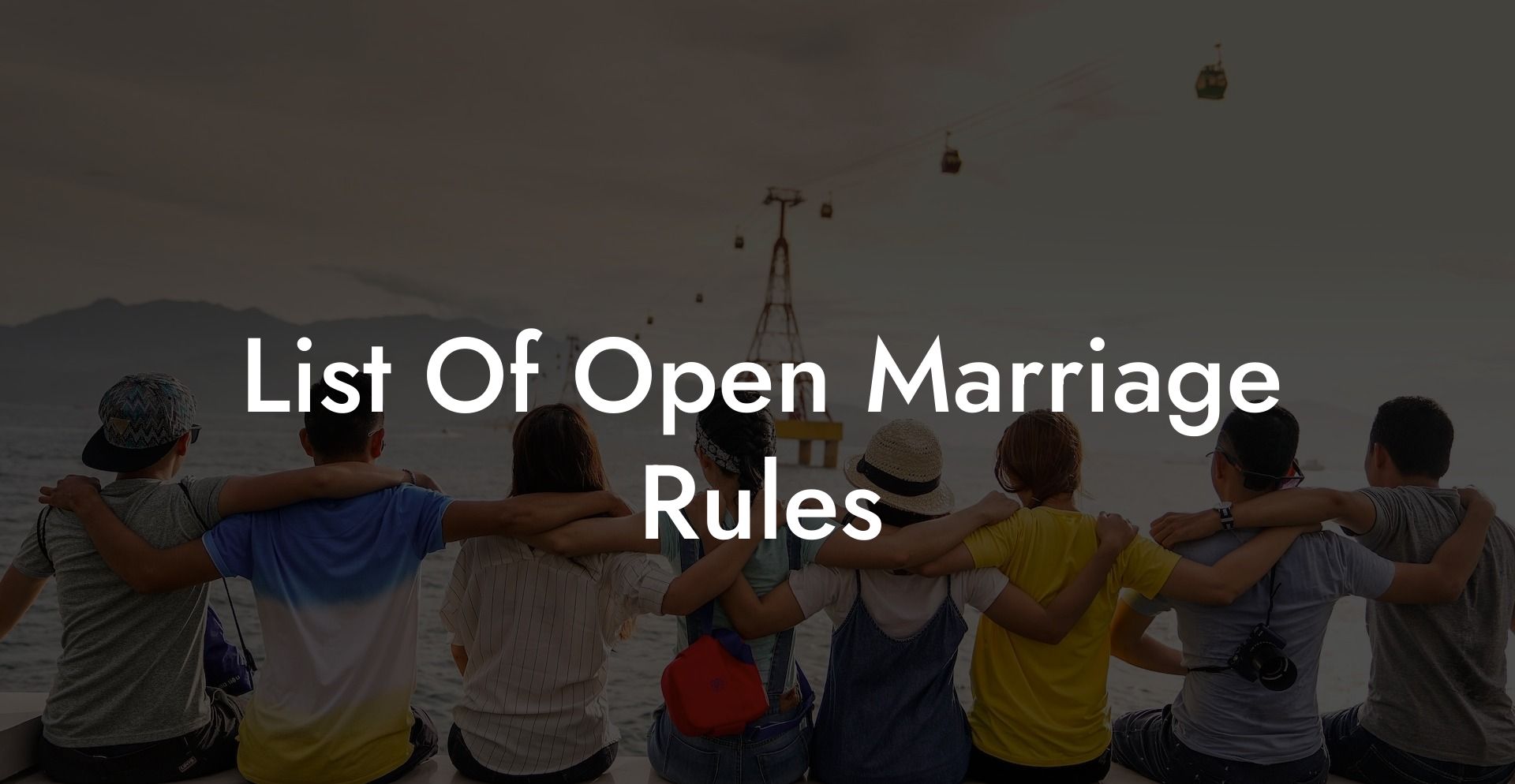
Welcome, adventurous souls! If you’re exploring the world of open marriages and wondering what guidelines can help make such relationships thrive, you’ve come to the right place. In this comprehensive guide, we present a detailed list of open marriage rules designed to foster honesty, consent, and mutual respect. Whether you’re new to the open marriage lifestyle or looking to refine your existing relationship dynamics, this guide offers practical advice, real-life examples, and expert insights to help you build a fulfilling and resilient partnership.
Quick Links to Useful Sections
- Understanding Open Marriage
- The Importance of Clear Rules in Open Marriage
- List of Essential Open Marriage Rules
- 1. Open Communication is Non-Negotiable
- 2. Consent Must Be Continuous and Enthusiastic
- 3. Prioritize Sexual Health and Safety
- 4. Establish Clear and Flexible Boundaries
- 5. Mutual Respect is the Foundation
- 6. Time Management and Scheduling Are Key
- 7. Regular Emotional Check-Ins
- 8. Transparency About External Relationships
- 9. Use Digital Tools to Enhance Organization
- 10. Seek Support When Needed
- Additional Rules and Considerations
- Real-Life Experiences
- Expert Insights
- FAQ: List of Open Marriage Rules
- Resources and Community Support
Understanding Open Marriage
Open marriage is a relationship model in which both partners consent to having romantic or sexual relationships with other people while maintaining their primary commitment to one another. This approach is built on the principles of ethical non-monogamy, which require full transparency, open communication, and ongoing consent from all involved parties. Unlike infidelity or cheating, open marriage is consensual, ethical, and designed to enhance the primary relationship rather than undermine it.
Many couples choose open marriage to explore new dimensions of intimacy, to nurture personal growth, or simply to add variety to their emotional and sexual experiences. The key to making an open marriage work lies in establishing clear, mutually agreed-upon rules that safeguard everyone’s well-being and ensure that all relationships are entered into voluntarily and with respect.
The Importance of Clear Rules in Open Marriage
Rules are the backbone of any successful open marriage. They provide structure, establish expectations, and create a safe space where both partners can explore external relationships without compromising their primary bond. Clear rules help prevent misunderstandings, reduce the risk of hurt feelings, and lay the groundwork for continuous, honest communication. With a well-defined set of guidelines, couples can navigate the complexities of open marriage with confidence and mutual understanding.
Establishing these rules is not about restricting freedom; rather, it is about empowering each partner to express their desires and needs openly, while protecting the relationship’s integrity. By setting boundaries and engaging in regular check-ins, couples can ensure that all parties remain informed, respected, and emotionally secure.
List of Essential Open Marriage Rules
Below is a comprehensive list of essential rules that many couples find helpful when practicing open marriage. Each rule is designed to address key aspects of the relationship, from communication and consent to sexual health and emotional management.
1. Open Communication is Non-Negotiable
Clear, honest communication is the cornerstone of any successful open marriage. Both partners must be willing to discuss their feelings, desires, and concerns openly. This includes discussing any new external relationships, scheduling regular check-ins, and ensuring that each person feels heard. Establishing a routine for communication, such as weekly meetings or daily check-ins, can help prevent misunderstandings and address issues before they escalate.
Effective communication involves active listening, using “I” statements to express personal feelings, and creating a non-judgmental space where both partners can share their experiences without fear of criticism.
2. Consent Must Be Continuous and Enthusiastic
Consent is not a one-time event; it is an ongoing process. Every new encounter and any changes in relationship dynamics require clear, enthusiastic consent from all parties involved. Both partners must agree to the terms of any external relationship, and this agreement should be revisited regularly. Establishing a culture of continuous consent ensures that everyone feels secure and respected.
Transparency about intentions and boundaries is crucial. It is important that consent is reaffirmed through regular discussions, allowing each partner to voice any reservations or changes in their feelings.
3. Prioritize Sexual Health and Safety
Maintaining robust sexual health practices is essential in an open marriage. Both partners should commit to using protection consistently, scheduling regular STI tests, and discussing any health concerns openly. Safe sex practices not only protect your physical well-being but also reinforce the trust that underpins your relationship.
It is advisable to set specific health protocols and to keep each other informed about any changes in your sexual health status. This level of transparency is key to fostering a secure environment for all involved.
4. Establish Clear and Flexible Boundaries
Boundaries serve as the guidelines for what is acceptable and what is not in your relationships. In an open marriage, boundaries might include limits on the type or frequency of external encounters, the level of emotional involvement allowed, or rules about how much information is shared about outside relationships.
It is important to define these boundaries early on and document them in a relationship agreement if necessary. Remember, boundaries should be flexible, what works today might need adjustment tomorrow. Regularly revisiting and renegotiating your boundaries is essential for accommodating changes in feelings and circumstances.
5. Mutual Respect is the Foundation
Respect for each partner’s feelings, needs, and autonomy is non-negotiable. In an open marriage, each partner’s emotional and physical well-being must be a top priority. This means listening to one another, acknowledging concerns without judgment, and supporting each other through the challenges that arise.
Mutual respect extends to external partners as well. Everyone involved should be treated with dignity and courtesy, ensuring that all interactions are grounded in fairness and empathy.
6. Time Management and Scheduling Are Key
Balancing a primary relationship with external encounters can be challenging. Effective time management is crucial to ensure that both your own needs and those of your partner are met. Using digital tools like shared calendars or scheduling apps can help coordinate plans and prevent conflicts.
Clear scheduling not only helps in planning dates but also in ensuring that both partners have sufficient quality time together, which is essential for maintaining a strong primary bond.
7. Regular Emotional Check-Ins
Emotional check-ins are a proactive way to address any feelings of jealousy, insecurity, or imbalance. Schedule regular meetings where you and your partner can discuss your emotional state, share feedback, and adjust your boundaries as needed. These check-ins provide a safe space for addressing concerns before they grow into larger issues.
Whether it’s a weekly chat over coffee or a more formal monthly review, these sessions are vital for sustaining emotional intimacy and ensuring that all parties feel valued.
8. Transparency About External Relationships
In an open marriage, transparency about external relationships is critical. Both partners should be comfortable sharing information about new encounters and existing external connections. This level of openness helps maintain trust and prevents feelings of betrayal.
Discuss the degree of detail that is comfortable for everyone and agree on how much information will be shared. This clarity can prevent misunderstandings and foster a sense of security.
9. Use Digital Tools to Enhance Organization
Leverage technology to streamline communication and scheduling. Shared calendars, messaging apps, and digital journals can help you manage the logistics of an open marriage effectively. These tools can keep everyone informed about plans, appointments, and check-ins, reducing the likelihood of conflicts.
Digital organization not only aids in time management but also provides a record of agreements and changes that can be revisited as your relationship evolves.
10. Seek Support When Needed
Transitioning into or maintaining an open marriage can sometimes be emotionally challenging. It is important to seek support, whether through professional counseling, relationship coaching, or peer support groups. Engaging with communities that understand the intricacies of open marriage can provide valuable insights and help you navigate challenges.
Don’t hesitate to reach out to a therapist who specializes in non-traditional relationships if you find yourself struggling with jealousy, insecurity, or communication issues.
Additional Rules and Considerations
Beyond the core rules, there are additional considerations that can help fine-tune the dynamics of an open marriage:
- Rule 11: Maintain a Non-Judgmental Attitude
Approach all encounters with an open mind and refrain from judging others’ choices. A non-judgmental attitude creates a supportive environment for exploration and growth. - Rule 12: Respect Privacy and Personal Boundaries
While transparency is important, it’s equally vital to respect personal privacy. Decide together how much information is shared about external relationships and maintain a balance between openness and discretion. - Rule 13: Adapt and Evolve
Recognize that both individuals and relationships evolve over time. Be willing to adjust your rules and boundaries as circumstances change. Flexibility is key to long-term success. - Rule 14: Celebrate Successes
Take time to celebrate the positive aspects of your open marriage. Whether it’s a successful date, a productive check-in, or a personal breakthrough, acknowledging your successes reinforces your commitment to the lifestyle. - Rule 15: Foster Community Connections
Engage with communities, online or locally, that support open marriage. Sharing experiences with like-minded individuals can offer inspiration, practical tips, and a sense of belonging.
Real-Life Experiences
Many couples who practice open marriage have shared their journeys as a testament to the effectiveness of these rules. For instance, Sarah and John have been together for over a decade and introduced open marriage into their relationship after extensive discussion and mutual agreement. They credit regular communication, clearly documented boundaries, and the use of digital scheduling tools for keeping their relationship strong while exploring external connections.
Similarly, Mark describes how open, honest check-ins helped him and his partner navigate moments of jealousy and insecurity. By prioritizing emotional check-ins and being transparent about external relationships, they were able to turn potential conflicts into opportunities for deeper connection and understanding.
These real-life examples highlight that while the open marriage lifestyle requires effort and commitment, following a clear set of rules can lead to personal growth, enhanced trust, and enriched emotional fulfillment.
Expert Insights
Relationship experts emphasize that a successful open marriage is built on the pillars of communication, consent, and flexibility. Dr. Elena Rivera, a therapist specializing in non-traditional relationships, notes, “Couples who commit to clear, ongoing communication and adapt their boundaries as needed are much more likely to thrive in an open marriage. It’s about creating a living, evolving agreement that supports both partners.”
Relationship coach Marcus Lee adds, “The use of digital tools and structured check-ins can transform what might otherwise be a chaotic experience into a well-organized and deeply fulfilling relationship model. When every partner feels heard and respected, the benefits far outweigh the challenges.”
FAQ: List of Open Marriage Rules
1. What is the most important rule in an open marriage?
Open communication is the most critical rule, ensuring that all partners are informed and that feelings and boundaries are regularly discussed.
2. How do we ensure ongoing consent?
Consent must be continuously reaffirmed through honest dialogue and regular check-ins, ensuring that every new encounter or change in dynamics is agreed upon.
3. Why is sexual health so important in open marriages?
Prioritizing sexual health protects everyone involved. Strict adherence to safe sex practices and regular STI testing is essential for maintaining physical well-being.
4. How should boundaries be set?
Boundaries should be clearly defined, documented if necessary, and revisited regularly to adapt to changing circumstances and emotional needs.
5. What role does time management play?
Effective time management ensures that both the primary relationship and external encounters receive adequate attention, preventing feelings of neglect or imbalance.
6. How can couples manage jealousy?
Jealousy can be managed through regular emotional check-ins, self-reflection, and open dialogue, with the option of seeking professional support if needed.
7. How important is mutual respect?
Mutual respect is fundamental; it ensures that every partner feels valued and that all interactions are conducted ethically and compassionately.
8. What digital tools can help in an open marriage?
Shared calendars, scheduling apps, and secure messaging platforms can help coordinate dates and maintain transparency in the relationship.
9. Can rules evolve over time?
Yes, rules should be flexible and adapted as the needs and dynamics of the relationship change. Regular review is essential.
10. Where can I find more support and information?
Books like "The Ethical Slut" and "More Than Two", podcasts such as “Multiamory,” and online communities on Reddit and Facebook provide valuable insights and support.
Resources and Community Support
- Books & Blogs: Explore in-depth resources such as "The Ethical Slut" and "More Than Two" for guidance on open marriage and ethical non-monogamy.
- Podcasts: Listen to podcasts like “Multiamory” for real-life experiences and expert insights on navigating open marriage dynamics.
- Online Communities: Engage with forums and social media groups (e.g., Reddit’s r/polyamory) to share experiences and gain support.
- Therapy and Counseling: Consider seeking professional help from therapists or relationship coaches who specialize in open marriage and non-traditional relationship models.
With a robust set of guidelines, open communication, and supportive resources, you can confidently navigate open marriage arrangements and create relationships that are both enriching and sustainable.
Lost & confused by all of the terms, types and seemingly made up 3 letter acronyms?? We've got you. Check out our Ethnical Non-Monogamy Dictionary >>
Useful Interruption: Not sure which relationship vibe fits you best? Take our Relationship Test, it’ll give you the real insight into your natural relationship style. Then, dive into our binge-worthy guides (from the tried-and-true to the “wait, that’s a thing?”) and find the perfect relationship type for your life:
- Monogamy
- Open Relationships
- Ethical Non-Monogamy
- Solo Polyamory
- Non-Hierarchical Polyamory
- Hierarchical Polyamory
- Relationship Anarchy
- Swinging
Now back to the main article but yeah take the test...

